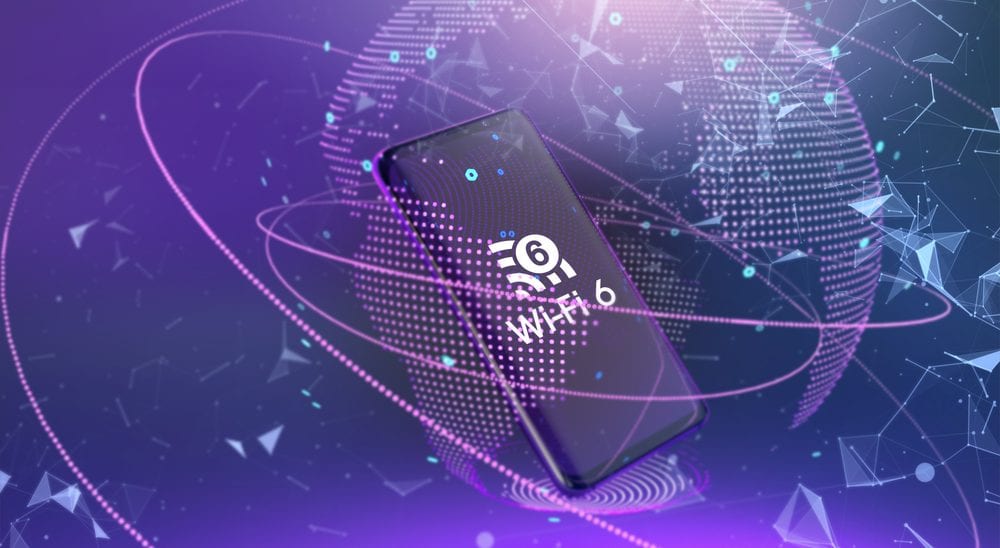Full speed ahead with Wi-Fi 6

In our latest contribution Dahwood Ahmed, Senior Country Manager UK&I at Extreme Networks explores the introduction of Wi-Fi 6.
Across the UK, the number of devices being used in households, workplaces and by individuals is rapidly increasing. With 82% of people across the country owning some form of connected device in 2019, and an average of 6.3 devices per household, connectivity is an important part of our daily lives. However, with this increase in devices comes greater pressure on wireless technologies to ensure that users are able to make the connections they need. Fortunately, 2019 saw the realisation of a range of new wireless technologies that promise to match the demands of today’s networking landscape.
Wi-Fi 6, 5G, CBRS (privateLTE), LoRaWAN, and a host of IoT-focused solutions all debuted with extensive test-results proving their relative advantages. But these test results offered little value to the average user considering that the findings were subjective and required expensive test equipment to verify. Moreover, with Wi-Fi being the de facto choice for nearly all use cases, it is unlikely that most consumers will look further than Wi-Fi 6 for their networking needs. This is especially true considering that changes in wireless technology would require the installation of additional infrastructure to manage and secure it. With this in mind, it’s worth asking what developments Wi-Fi 6 has made from its predecessors and how this will impact the average user?
The Need for Speed
The introduction of Wi-Fi 6 is an exciting prospect. The Wi-Fi Alliance’s recent announcement of Wi-Fi 6E, which allows for Wi-Fi networks to leverage 6GHz bands for unlicensed Wi-Fi operation, is just one of the myriad developments from its predecessors. Not long after after this, Broadcom announced a full suite of 6 GHz Wi-Fi chips as part of a new offering. The new 20, 40, 80 & 160 MHz channels have clear technical advantages in reducing CCI or ACI problems (cleaner spectrum), supporting high bandwidth applications like virtual and augmented reality (VR/AR).
What is more exciting though is how these channels benefit the average user in common use cases. For instance, there are an estimated 41 million social media users in the UK in 2020. This equates to vast quantities of data both being streamed as video content and being uploaded by users. Wi-Fi 6 promises to enable consumers to perform these everyday activities seamlessly, even on networks hosting vast numbers of devices.
Throughout its 21-year history, Wi-Fi has seen consistent improvements in performance, reliability and security. The introduction of Wi-Fi 6 and 6GHz represents a significant development in these areas. To illustrate this, let’s use the analogy of roads.
Read More: UK Government plans new law for smart home IoT devices
Back when Wi-Fi was first introduced with 11 a/b/g, users were all on a single-track road where just one or two slow vehicles would ruin the network’s aggregate throughput. As Wi-Fi got more sophisticated with 11n, 11ac and 11ax, users were moved to a motorway allowing for far more traffic and greater speeds. With 11n, however, users were stuck in the left-hand lane and couldn’t travel at the 70mph speed limit if other cars blocked the way. 11ac did let users into the middle lane where they could travel faster, but even then, a small bit of congestion brings average speeds down. 11ax/ Wi-Fi 6, on the other hand, allows for multi-user communication and enables more than one client to talk at a time.
Life in the Fast Lane
For our motorway analogy, Wi-Fi 6 is not only allowing users to drive in the right-hand lane but they’re travelling in high-performance vehicles. With Wi-Fi 6 even a herd of tractors blocking the left-most lanes won’t get in the way of performance. With Wi-Fi 6 now functioning like a fully operational motorway, what developments can we expect from Wi-Fi 6E?
To keep using the same analogy, Wi-Fi 6E is creating the junctions that allow users to switch from one motorway to the next. Say a user is in the fast lane but even with all the lanes open, too many other users collectively still lead to a traffic jam. With Wi-Fi 6E allowing you to use junctions and access the next motorway you can always be assured of maximum speeds. Moreover, these new motorways built on Wi-Fi 6 will have minimum speed limits meaning that no slow-moving vehicles will be slowing things down for everyone else. In plain English, only high-performance devices using Wi-Fi 6 or above can use these motorways, allowing for all users to unanimously enjoy faster speeds.
In summary, Wi-Fi 6E is yet another big step forward for wireless technologies. While it is a promising technology for those in the industry, the benefits will also be felt by the average user on a day-to-day basis. Seeing that consumers are already familiar with Wi-Fi and that this next iteration offers the improvements necessary to support the growing number of devices, it is likely that consumers will continue using Wi-Fi, now and in the future.
